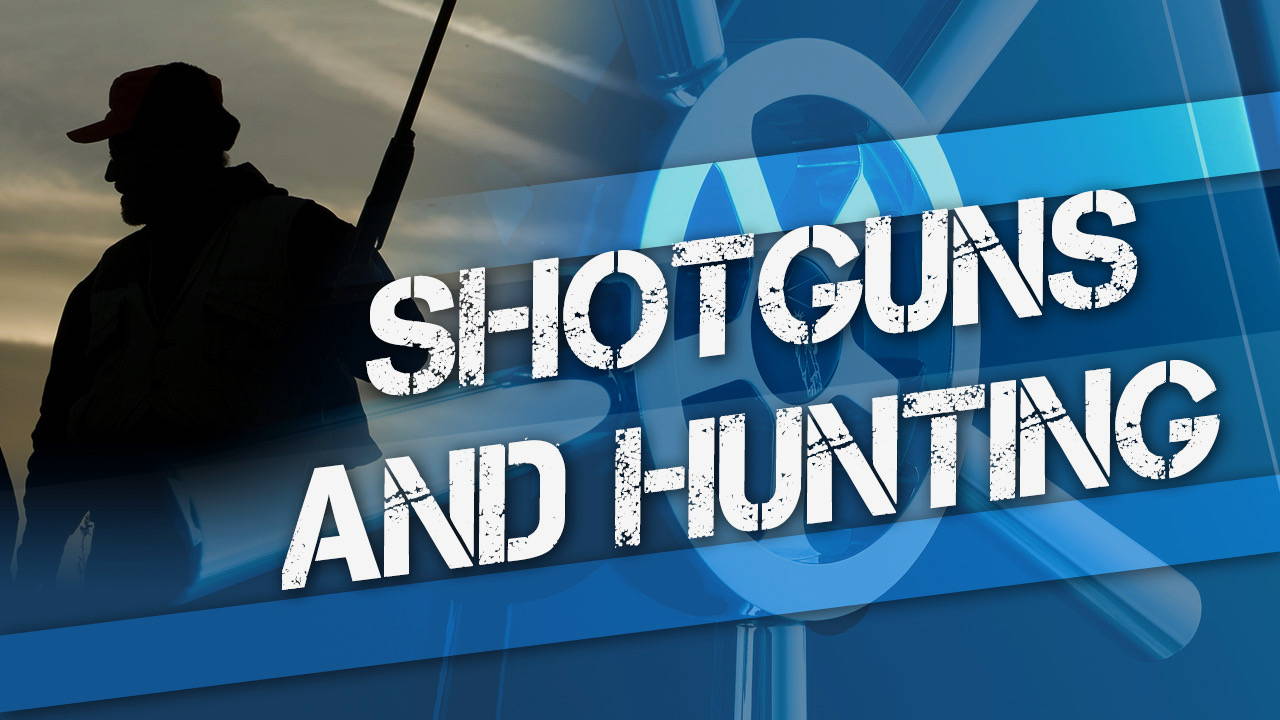Shotguns are probably the most versatile type of firearm overall. Not only can they be used for clay target shooting, defensive, and tactical use, but they are astonishingly diverse in the way they can be used for hunting. In fact, the first historical use of the shotgun was for hunting.
The initial development of firearms related to today’s shotgun occurred in 16th-century Europe, where large, smoothbore, muzzle-loading firearms began to be loaded with multiple, small lead pellets (known as “shot”), and were used primarily to hunt birds (hence they became known as “fowling pieces”). These “fowling pieces” gradually morphed into more portable, dedicated shotguns by the late 18th century, and the shotgun “shell” or self-contained cartridge was available by the latter half of the 19th century.
While there was some military and defensive use of these types of arms, the primary purpose of early shotguns was in hunting birds and other small game.
Why shotguns are ideal for bird hunting
The reason shotguns excel at hunting birds and other fast-moving game when compared to firearms that fire one projectile at a time is that it is dramatically easier to hit flying birds, or other small game animals, with a shotgun. Why? Because a shotgun (when loaded with “shot”) produces a “cloud” or column of shot that allows for a much greater margin of error.
Hitting a flying bird with a rifle is theoretically possible (and some have done it), but it’s exceptionally difficult, not to mention shooting a rifle bullet up in the air is irresponsible and dangerous, as bullets may travel a mile or more and hit a person or someone’s property.
Individual birdshot pellets are very small, and they aren’t spin-stabilized by any rifling, so they generally lose their lethality within about 80-100 yards.
What kind of shotgun is best for hunting upland game or waterfowl?
For upland game hunting, pretty much any type of smoothbore shotgun can be a suitable choice. Some hunters prefer the traditional aesthetics and easy handling of a lightweight double-barreled shotgun, while others prefer the versatility and durability of a quality semi-auto or pump-action shotgun.
For grouse, quail, or chukar hunters who climb mountains or walk lots of miles through deserts, forests, or brush to seek their quarry, an ultralight semi-auto in 20-gauge might be ideal.
Texas dove hunters or South-Dakota pheasant hunters who fire a lot of shots each day may appreciate a heavier semi-auto to help soak up some of the recoil.
For waterfowl such as ducks, geese, swan, etc. your choices have become a little more limited as far as shotgun type and chambering. Opinions vary, and pretty much any 10, 12, 16, or 20-gauge shotgun CAN be effective on waterfowl in the hands of a talented hunter. However, the recent prohibition against lead shot for hunting waterfowl in most areas has narrowed the choices down to a 10 or 12 gauge shotgun for serious hunting use. The reason for this is that steel shot, while non-toxic to waterfowl and fish, is significantly lighter than lead shot, and needs to be of a larger size and driven much faster than lead to produce clean, ethical kills on waterfowl at typical hunting ranges.
Since an effective payload of larger steel shot requires a large shell, a large charge of powder, and a large bore to deliver it, most waterfowlers today choose a 3- or 3 ½” chambered 12-gauge, either a pump-action or a semi-automatic. 10-gauge firearm and ammunition choices have become rare and expensive. While some hunters still choose an old vintage bolt-action for snow geese or even an over-under when hunting ducks, the harsh conditions associated with waterfowl hunting drive most hunters to select a quality, durable, synthetic-stocked pump or semi-automatic in a 12 gauge magnum chambering.
Please note: Remember to adhere to your state’s regulations on magazine capacity for hunting any particular game. Some states require that a tubular magazine’s capacity be limited by an internal plug to 2 rounds for hunting use, and game wardens will frequently check that your shotgun will not accept any more cartridges than is legally allowed.
Shotguns and turkey hunting
Shotguns are excellent for hunting flying birds, but they are also perfect for hunting the wild turkeys of North America, which are typically harvested at close range while on the ground, after the hunter calls them in with a turkey call and/or decoys. Turkey hunting shotguns today may have iron sights or even optical sights, and usually are equipped with extra-full “turkey” chokes to keep the shot pattern very tight over a longer distance, in order to deliver an effective number of pellets to the head and neck area of a turkey, to prevent ruining the meat.
Depending on which shotgun you select and where you live, your turkey-hunting shotgun may also serve double duty as your deer-hunting shotgun, which brings us to the next point.
Shotguns and deer hunting
As noted above, shotguns are very versatile firearms. They can fire a vast array of different types of ammunition, with very different results on a game animal. They can be used for hunting everything from the smallest upland game birds to the largest game in North America.
How can a gun suitable for hunting flying birds also be capable of hunting deer or other large game? Due to the shotgun’s ability to use “buckshot” or “slug” cartridges.
Buckshot is so named because it was designed for hunting larger game, such as deer (buck). A buckshot cartridge is similar to birdshot in that it contains multiple lead projectiles. However, buckshot pellets are much larger in size and there are far fewer of them per cartridge. While a typical shotshell of #8 birdshot contains hundreds of tiny, lead pellets, a common “double-aught” (00) buckshot load might contain only 8 or 9 .33” lead balls.
For deer-sized game, a smoothbore shotgun loaded with buckshot can be a very effective choice out to around 50 yards. In some U.S. locations, hunters are prohibited from using centerfire cartridges for hunting deer, and buckshot can be a good option, assuming it conforms with your state’s game regulations.
Slug cartridges, instead of small, round lead pellets, contain a single, large metal bullet loaded in a plastic hull, and are used by some hunters for taking deer or other large game. Slugs are available in two common varieties: so-called “rifled” or “Foster-type” slugs are soft lead, with angled “riflings” molded into the sides to allow them to swage down through a shotgun choke safely. (Despite the confusing name, “rifled slugs” are intended to be fired in smoothbore barrels, and the “riflings” do not impart any spin to the projectile, despite what the experts hanging around your local gun counter may tell you.)
Smoothbore shotguns can be quite accurate with Foster-type slugs, and with the right ammo and choke selection, they can be an effective choice for hunting deer out to around 100 yards. (Be sure to confirm your shotgun’s zero and make sure it’s capable of ethically sound levels of accuracy before you use it for deer hunting.)
“Sabot” (SAY-bow) slug cartridges contain a smaller-diameter projectile, often with a hollow point, contained within a plastic housing or “sabot” that breaks away from the slug after leaving the barrel. This allows sabot slugs to be spin-stabilized when fired through rifled shotgun barrels. Sabot slugs can be surprisingly accurate, and might extend a hunter’s effective range out to 200 yards or so, depending on the shotgun, the ammo, and the abilities of the shooter.
It might sound strange to hear that some shotguns have rifled barrels, but these came into being due to the prohibition of rifles for hunting in some locales. These “rifled shotguns” are specialized firearms intended for hunting in areas where traditional rifles are not allowed. Always adhere to your state’s game regulations. For more details, please refer to our article, are shotgun barrels rifled?
Keep your hunting shotgun secure in a Liberty Safe
Choosing the right shotgun for hunting can be confusing, but learning about your options and making the choice that’s just right for you is also one of the things that makes shooting and hunting such a fun, satisfying activity.
Whatever shotgun you choose for hunting, sporting, or defensive use, be sure to keep it safe and secure when it’s not under your direct control. A Liberty Safe is the perfect choice. Visit your local Liberty Safe dealer to find the right safe for you and your family!
*Made in the U.S.A. from U.S. and Global Parts.







